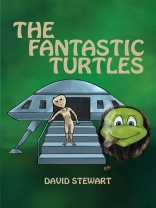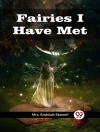After finding some old submarines on a nearby deserted island, The Fantastic Turtles follow their leader, Sarde, as he heads south. Ending up at the home of their longtime rivals, the Falgans, they begin to exact some long-awaited revenge, with some unexpected results.
Laugh and cry as most of The Fantastic Turtles overcome many different obstacles to survive, while some find other ways to cope with the ever-present dose of reality.
Circa l’autore
Barney Darwin was born in Hamilton, Ontario, in 1961. He spent his childhood moving from coast to coast. Shortly after his mother’s passing in 1997, he wrote a song that he called “The Fantastic Turtles.” Listeners were always intrigued with the lyrical content. Barney was diagnosed with spinocerebellar ataxia, type 7, late in 1997. He was sitting in his wheelchair one day in 2015 when he decided to turn “The Fantastic Turtles” into a book. After a little more than a year, where the story kept growing, The Fantastic Turtles was reborn.
For a long time he thought, “There is so much more to say. How do I do it?” Then it hit him. “Make an addition to the book, and explain it.” You’ll find that he is honest in both what he says and how he says it. He has no need to be dishonest, and he has no tolerance for it. There is a reason for this, so please read it through. So here goes.
He was born with a then unknown hereditary condition called spinocerebellar ataxia. It means that his brain stem is slowly shrinking, and as it does, it is damaging the nerves that are to be protected. Those nerves control his motor skills and eyesight. It is causing him to have muscular degeneration.
At the time he was diagnosed (1997), it was still in its infancy, and he has what is known as type 7. Apparently, they have now found almost thirty different variations. By mid-1998, his eyesight was measured at 20/200, the threshold the government uses to declare you legally blind. It was then that they said he was no longer allowed to drive. Now (2016), he is around 20/1000. All forms of measurement are lost after you reach 20/800. Writing the fantastic turtles, he was warned, would cost him his eyesight—and it did. Oops.
In 2012, he moved into an assisted-living residence. At that time, he was using a walker. Within two months, the nurses there had him—and he needed it—using a wheelchair. Never being one who could be accused of sitting around when he could be doing something, he decided to write a book. In May of 2015, he began writing The Fantastic Turtles, and 1, 500-plus hours later, this is the result.
Why is he doing this? There are four reasons.
1. He feels people need to be educated.
2. He wants everyone to know why the fonts have been left large. It’s easier for him to read with a magnifier, and he hopes to encourage others to do the same. He has found that reading has been taken away from him. One of the reasons for this is that the print is too small.
3. Not everybody who is disabled enjoys spending their time unable to do anything. He is still able to do something, so he is.
4. He would like to have a residence committed to encouraging those with the skill to pursue their goals. To his knowledge, nothing like that exists at the moment. How this will be accomplished still has to be developed.
Now on to the story. Of course, it started out as something else but became what it is now. But what has never changed is this: it is meant to be pure entertainment. There are no hidden messages or anything. Just kick back, relax, and join the turtles as they discover the world around them.












